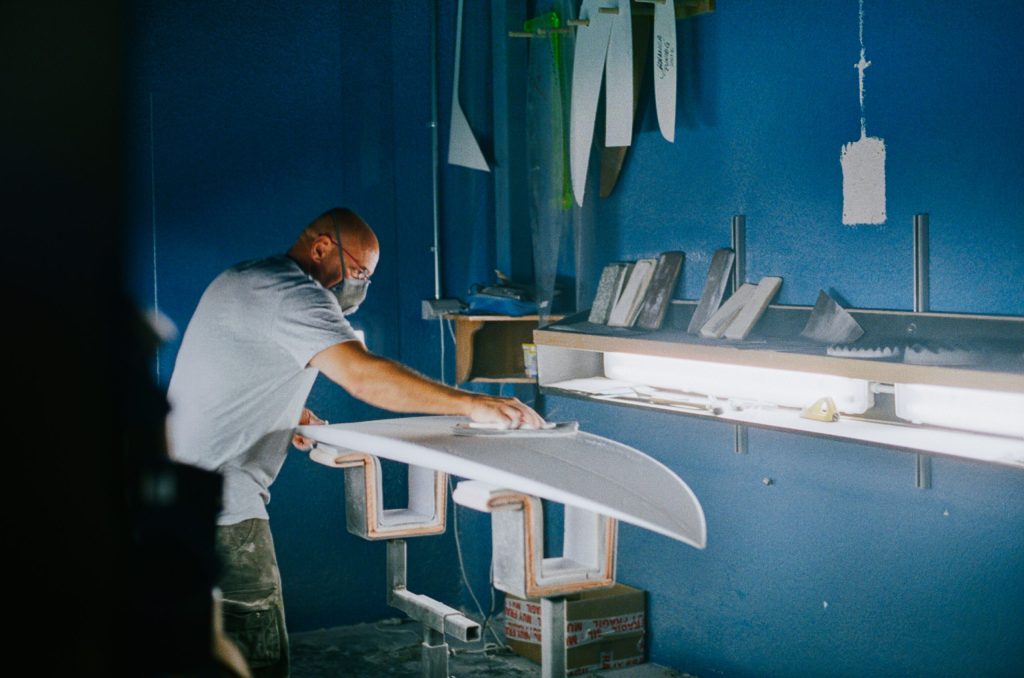Surfing has been a beloved water sport for decades, and over time, the design and construction of surfboards have undergone a significant transformation. Today, surfboard-shaping machines have become an essential tool in manufacturing, allowing for the precise creation of surfboards at a much faster pace than traditional hand-shaping methods.
But how exactly do these machines work? In this article, we will explore the inner workings of a surfboard shaping machine, including the technology and techniques used to produce custom surfboards unique to each surfer’s preferences and needs.
Table of Contents
How does a surfboard shaping machine work?

Surfboard shaping machines are advanced computer-controlled systems using cutting-edge technology to accurately and efficiently shape surfboards. The process begins with a surfboard design being uploaded into the machine’s software. The design may be based on a traditional template or customized to suit a specific surfer’s preferences.
Once the design is uploaded, the machine uses cutting tools, including routers and sanders, to carve the foam blank into the desired shape. The machine’s cutting head moves in three dimensions, creating curves and contours that are impossible to achieve with traditional hand-shaping methods.
Surfboard shaping machines can also create different types of concaves, rockers, and rail shapes, enabling surfers to have a board that suits their style and needs.
The devices also can create fins, fin boxes, and other board features with precision and accuracy.
One of the key advantages of surfboard shaping machines are their speed and consistency. A skilled shaper can hand shape a surfboard in a few hours, while a machine can produce several boards at the same time. Additionally, the machine’s precision ensures that each panel is identical to the original design, eliminating variations caused by human error.
Overall, surfboard shaping machines are revolutionizing the surfboard manufacturing industry, making it possible for surfers to have custom-designed boards that are not only unique but also high-performing and reliable.
The Design of the surfboard shaping machine

The design process for surfboard shaping machines typically involves creating a digital 3D model of the desired shape. This can be done using specialized software programs that allow the shaper to manipulate the dimensions and contours of the board to achieve the desired shape.
Some surfboard shaping machines come with pre-installed design templates that can be used as a starting point for the shaping process. Others allow shapers to create their custom designs from scratch.
Once the design is finalized and uploaded to the machine’s software. The software then calculates the cutting paths and tool movements required to shape the surfboard. The cutting tools are typically controlled by computer-numerical-control (CNC) software, which allows for precise and accurate cuts to be made.
Surfboard shaping machines also offer the ability to modify existing designs or templates, making it possible to create custom surfboards that are tailored to a surfer’s specific needs and preferences. For example, the shaper can adjust the board’s dimensions, rocker, or rail shape to optimize its performance for different wave conditions or riding styles.
Overall, the design a process on surfboard shaping machines allows for a high degree of customization and precision, making it possible to create surfboards that are uniquely suited to each surfer’s individual needs and preferences.
The CNC Surfboard Shaping Machine Software

The software used in CNC surfboard shaping machines plays a crucial role in the manufacturing process. This software is responsible for creating and processing the 3D design files, generating tool paths for the cutting tools, and controlling the movements of the cutting head.
The software used in surfboard shaping machines is typically CAD/CAM (computer-aided design/computer-aided manufacturing) software, which allows the shaper to create and modify the 3D models of the surfboard designs. The software also includes advanced tools for optimizing the design for specific wave conditions, riding styles, and performance characteristics.
The software also includes features for managing the cutting process, such as controlling the depth of the cuts, managing the speed and feed rates of the cutting tools, and detecting errors or inconsistencies in the cutting process.
Overall, the software used in CNC surfboard shaping machines is a critical component of the manufacturing process, enabling shapers to create high-quality, custom-designed surfboards with precision and accuracy.
The Time Gains

One of the most significant benefits of using surfboard shaping machines is their time savings over traditional hand-shaping methods. Hand shaping a surfboard can take several hours, and even experienced shapers can spend up to several days on a single board.
In contrast, surfboard shaping machines can produce multiple boards in a fraction of the time it takes to hand-shape a single board. Once the design is uploaded into the machine’s software, the shaping process can be completed in a matter of hours, depending on the complexity of the design and the number of boards being produced.
This time savings is significant for surfboard manufacturers who need to create many boards to meet demand. With a surfboard shaping machine, they can significantly increase their production capacity while maintaining high-quality standards and consistency.
Another advantage of the time savings surfboard shaping machines offer is the ability to produce custom-designed boards more quickly. A surfer who orders a custom board from a shaper can typically expect to wait several weeks or months to complete the board. With a surfboard shaping machine, the production time can be significantly reduced, allowing surfers to get their custom boards more quickly.
Overall, the time gains offered by surfboard shaping machines make them a valuable tool for surfboard manufacturers and shapers, enabling them to produce high-quality boards more quickly and efficiently than ever before.
The Versatility

Surfboard shaping machines are incredibly versatile tools that offer a range of capabilities beyond just shaping surfboards. Here are some examples of the versatility of surfboard-shaping machines:
- Customization: Surfboard shaping machines can create custom-designed boards tailored to a surfer’s needs and preferences. Shapers can adjust the board’s dimensions, rocker, rail shape, and other characteristics to optimize its performance for different wave conditions or riding styles.
- Multiple board types: Surfboard shaping machines can shape many board types, including shortboards, longboards, fish boards, and more.
- Materials: Surfboard shaping machines can shape boards using foam, wood, and composite materials.
- Other applications: Surfboard shaping machines can be used for other applications beyond surfboard shaping, such as shaping stand-up paddleboards, kiteboards, and even non-water sports equipment like snowboards.
- Precision: Surfboard shaping machines offer high precision and accuracy, ensuring that each board is identical to the original design and minimizing variations caused by human error.
Overall, the the versatility of surfboard shaping machines makes them a valuable tool for a range of industries beyond just the surfboard manufacturing industry. They offer shapers and manufacturers the ability to create custom-designed, high-quality boards quickly and efficiently while also expanding their capabilities to other applications.
The Investment

Investing in a surfboard shaping machine can be a significant financial commitment for manufacturers or shapers. The cost of a new surfboard shaping machine can range from tens of thousands to over $100,000, depending on the machine’s size, capabilities, and features.
However, it’s essential to consider the long-term benefits of investing in a surfboard shaping machine.
Here are some factors to consider when evaluating the investment in a surfboard shaping machine:
- Increased production capacity: Surfboard shaping machines can significantly increase production capacity, allowing manufacturers or shapers to produce more boards in less time.
- Improved quality and consistency: Surfboard shaping machines offer high precision and accuracy, ensuring that each board is identical to the original design and minimizing variations caused by human error.
- Cost savings: While the initial investment in a surfboard shaping machine can be significant, over time, the machine’s efficiency and production capabilities can result in cost savings for manufacturers or shapers.
- Customization and versatility: Surfboard shaping machines offer a range of customization and versatility, allowing for the production of custom-designed boards tailored to a surfer’s individual needs and preferences.
Overall, investing in a surfboard shaping machine can be a significant financial commitment, but it canalso offer a range of long-term benefits for manufacturers or shapers. It’s essential to evaluate the machine’s capabilities and features, as well as the potential return on investment, when considering the investment in a surfboard shaping machine.
Conclusion

In conclusion, surfboard shaping machines are revolutionizing the surfboard manufacturing industry, offering shapers and manufacturers an efficient and precise way to create custom-designed, high-quality surfboards. Using advanced technology and software, these machines can shape foam blanks into the desired shape accurately and consistently, which is impossible to achieve with traditional hand-shaping methods.
The design capabilities of surfboard shaping machines also offer a high degree of customization and versatility, allowing surfers to have boards uniquely suited to their needs and preferences. While the investment in a surfboard shaping machine can be significant, the long-term benefits of increased production capacity, improved quality and consistency, cost savings, and customization and versatility make it a valuable tool for surfboard manufacturers and shapers. With surfboard shaping machines, the surfboard manufacturing industry is poised to continue evolving and producing high-quality, custom-designed surfboards for surfers worldwide.




